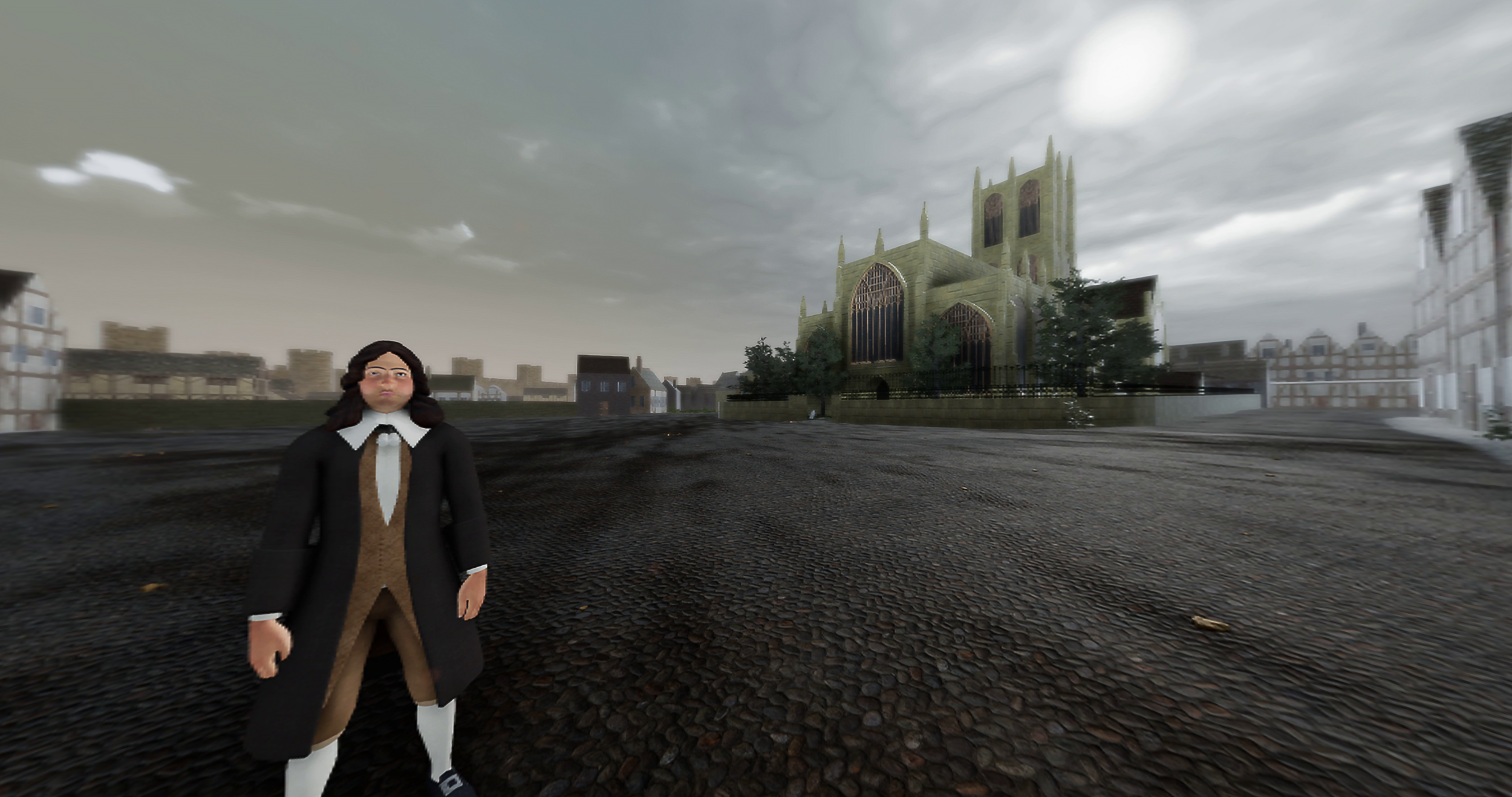Summary
Take a trip to the 1600s to visit Andrew Marvell’s Hull as it suffers a devastating flood. Explore Hull as it was then, built up by the BetaJester team using old maps and archival and archaeological evidence. Experience the flood which Marvell wrote about nearly 400 years ago, thanks to the University of Hull Energy and Environment Institute’s flood model.
Funded by the AHRC Creative Industries Cluster ‘XR Stories’, the project aims to bring together literature and climate change through technology, with the University of Hull working alongside BetaJester Ltd.
Andrew Marvell, who would celebrate his 400th birthday in 2021, is a celebrated Hull poet who often wrote about flooding in his works.
The project is being led by Dr Stewart Mottram, a Senior Lecturer in English, whose research focuses on the seventeenth-century poet, alongside academics Dr Chris Skinner, within the University’s Energy and Environment Institute, and Dr Briony McDonagh in Geography.
The University’s Energy and Environment Institute has developed a computer model to represent the flooding around the Humber. This was built on to demonstrate how floods affected Hull in the lifetime of the Hull poet, Marvell, who writes about floods in his poetry from the 1640s.
Stewart Mottram said: “This project brings together the heart of Hull in the 17th Century with the climate interests of the University. As a city we have a lot of history and heritage with flooding and we are at an advantage we have never been at before where we can now use technology to explore and create some of our history, through virtual reality.”
Chris Skinner, whose flood modelling has informed the virtual reality experience, said: “Before we extensively managed the estuary, building embankments and walls to keep water out, people used to use it to their advantage – by deliberately flooding fields they added rich sediments and even held back Royalist forces sieging the city during the Civil War.”
“In part, it’s this relationship with the Humber we want to try and come back to – learning to live with the estuary as part of the nature of the city as opposed to it being something to fear.”
HISTORY
“Andrew Marvell often writes about flooding and the aim of this project is to bring people face to face with a virtual flood that they can experience and interact with. People can make decisions about how they might deal with the flood, by talking to Andrew Marvell.” - Dr Stewart Mottram, a Senior Lecturer in English,
17th-Century Hull
We built a digital model of 17th-century Hull, using old maps and archival and archaeological evidence. We have then integrated the Energy and Environment Institute’s flood plane model in order to visualise how the flood would have hit 17th-century Hull.
Experience
Visitors to the virtual Hull will experience city as it was then and discover what caused the flood in Marvell’s eyes, while at the same time learning more about flooding, technologies to prevent flooding, and the heritage of 17th-century Hull more generally.




